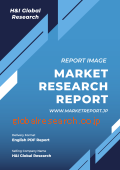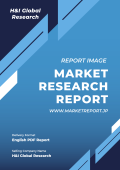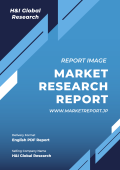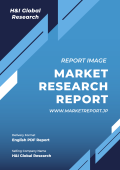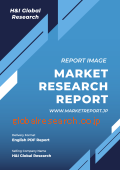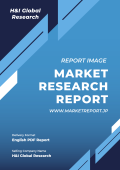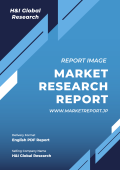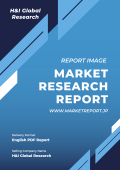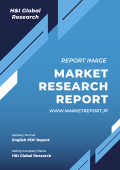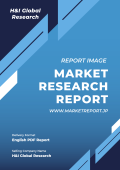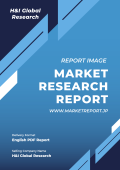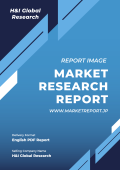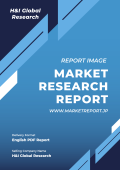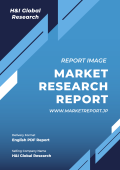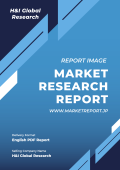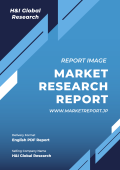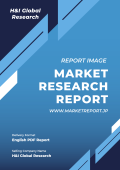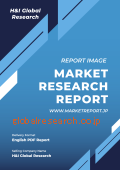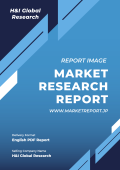| ■ 英語タイトル:Glass Processing Equipment Market Report by Type (Machinery for Cutting Glass, Machinery for Breaking Glass, Glass-Grinding Machine, Glass Drilling Machine, and Others), Application (Food and Beverage, Construction, Automotive, Consumer Electronics and Furniture, and Others), and Region 2023-2028
|
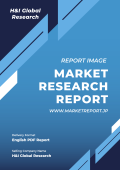 | ■ 発行会社/調査会社:IMARC
■ 商品コード:IMARC23JLY096
■ 発行日:2023年7月
■ 調査対象地域:グローバル
■ 産業分野:産業装置
■ ページ数:144
■ レポート言語:英語
■ レポート形式:PDF
■ 納品方式:Eメール
|
■ 販売価格オプション
(消費税別)
※販売価格オプションの説明はこちらで、ご購入に関する詳細案内はご利用ガイドでご確認いただけます。
※お支払金額は「換算金額(日本円)+消費税+配送料(Eメール納品は無料)」です。
※Eメールによる納品の場合、通常ご注文当日~2日以内に納品致します。
※レポート納品後、納品日+5日以内に請求書を発行・送付致します。(請求書発行日より2ヶ月以内の銀行振込条件、カード払いも可能)
※IMARC社の概要及び新刊レポートはこちらでご確認いただけます。
*** レポート概要(サマリー)***IMARC社の本市場調査レポートでは、2022年に24.1億ドルであった世界のガラス加工装置市場規模が、2028年までに339億ドルに達し、予測期間中(2023-2028)に年平均3.39%成長すると予想しています。本レポートでは、ガラス加工装置の世界市場について調査・分析し、序論、市場範囲・定義、エグゼクティブサマリー、イントロダクション、市場概況、種類別(ガラス切断機、ガラス破壊機、ガラス研削盤、ガラスボール盤、その他)分析、用途別(食品&飲料、建設、自動車、家電&家具、その他)分析、地域別(北米、アメリカ、カナダ、アジア太平洋、中国、日本、インド、韓国、オーストラリア、インドネシア、ヨーロッパ、ドイツ、フランス、イギリス、イタリア、スペイン、ロシア、中南米、メキシコ、ブラジル)分析、推進要因・制約・機会、SWOT分析、バリューチェーン分析、ファイブフォース分析、競争状況などの項目を掲載しています。また、本書には、Beijing Hanjiang Automatic Glass Machine Equipments Co. Ltd.、Benteler International AG、Bottero S.p.A.、CMS Glass Machinery、Glaston Corporation、Hegla GmbH & Co. KG、Keraglass SRL、LandGlass Technology Co. Ltd.、LISEC Holding GmbH、Luoyang North Glass Technology Co. Ltd.、S. K. Glass Machines(India) Pvt. Ltd.などの企業情報が含まれています。
・序論
・市場範囲・定義
・エグゼクティブサマリー
・イントロダクション
・市場概況
・世界のガラス加工装置市場規模:種類別
- ガラス切断機の市場規模
- ガラス破壊機の市場規模
- ガラス研削盤の市場規模
- ガラスボール盤の市場規模
- その他種類の市場規模
・世界のガラス加工装置市場規模:用途別
- 食品&飲料における市場規模
- 建設における市場規模
- 自動車における市場規模
- 家電&家具における市場規模
- その他用途における市場規模
・世界のガラス加工装置市場規模:地域別
- 北米のガラス加工装置市場規模
アメリカのガラス加工装置市場規模
カナダのガラス加工装置市場規模
- ヨーロッパのガラス加工装置市場規模
ドイツのガラス加工装置市場規模
フランスのガラス加工装置市場規模
イギリスのガラス加工装置市場規模
…
- アジア太平洋のガラス加工装置市場規模
中国のガラス加工装置市場規模
日本のガラス加工装置市場規模
インドのガラス加工装置市場規模
…
- 中南米のガラス加工装置市場規模
ブラジルのガラス加工装置市場規模
メキシコのガラス加工装置市場規模
…
- 中東・アフリカのガラス加工装置市場規模
・SWOT分析
・バリューチェーン分析
・ファイブフォース分析
・価格分析
・競争状況 |
Market Overview:
The global glass processing equipment market size reached US$ 2.41 Billion in 2022. Looking forward, IMARC Group expects the market to reach US$ 3.39 Billion by 2028, exhibiting a growth rate (CAGR) of 5.70% during 2023-2028 The growing construction and infrastructure sectors across the globe, rising focus on energy efficiency and green building practices, escalating demand for decorative and architectural glass represent some of the key factors driving the market.
Glass processing equipment refers to a range of machinery and tools used in the manufacturing and processing of glass products. It is designed to perform various operations on glass, such as cutting, shaping, grinding, drilling, polishing, tempering, laminating, and coating. These machines also enable the transformation of raw glass into finished products with specific dimensions, shapes, functionalities, and aesthetic qualities. They are also used to refine the edges of glass panels by removing sharp edges and creating smooth, polished edges. In addition, they include laminating machines that are used for the production of laminated glass, consisting of multiple layers of glass bonded together with an interlayer material. The versatility of the equipment allows for its usage in various industries, catering to the diverse requirements of glass product manufacturing and customization. As a result, it finds extensive applications across construction, automotive, electronics and displays, furniture and interior design, medical, laboratory equipment, and energy sectors.
Glass Processing Equipment Market Trends:
The market is primarily driven by the expanding construction and building industry. Glass processing equipment, including cutting, grinding, drilling, and edging machines, are essential for shaping and refining glass products used in the construction industry. In addition, the escalating demand for energy-efficient glass represents another major growth-inducing factor. Nowadays, with a growing focus on energy efficiency and sustainability, there is a rising demand for energy-efficient glass in buildings, which is escalating the adoption of glass processing equipment to manufacture products like insulated glass units (IGUs), low-emissivity (Low-E) glass, and solar control glass. Besides, various technological advancements in glass manufacturing and processing techniques have a significant impact on the glass processing equipment market. For instance, the development of advanced cutting, shaping, tempering, and laminating technologies has enabled the production of high-quality, customized glass products with improved strength, safety, and functionality. This, coupled with the increasing utilization of processed glass used in windshields, windows, sunroofs, and other automotive applications is positively influencing the market growth. Glass processing equipment is required for cutting, shaping, tempering, and laminating automotive glass to meet safety standards, provide better visibility, and enhance the aesthetic appeal of vehicles. Moreover, there is an increasing demand for specialty glass in various industries, including electronics, healthcare, aerospace, and defense. Specialty glass requires specific processing techniques such as precision cutting, polishing, grinding, and coating, which is also accelerating the product adoption rate.
Key Market Segmentation:
IMARC Group provides an analysis of the key trends in each segment of the global glass processing equipment market, along with forecasts at the global, regional, and country levels from 2023-2028. Our report has categorized the market based on type and application.
Type Insights:
Machinery for Cutting Glass
Machinery for Breaking Glass
Glass-Grinding Machine
Glass Drilling Machine
Others
The report has provided a detailed breakup and analysis of the glass processing equipment market based on the type. This includes machinery for cutting glass, machinery for breaking glass, glass-grinding machine, glass drilling machine, and others. According to the report, machinery for cutting glass represented the largest segment.
Application Insights:
Food and Beverage
Construction
Automotive
Consumer Electronics and Furniture
Others
A detailed breakup and analysis of the glass processing equipment market based on the department has also been provided in the report. This includes food and beverage, construction, automotive, consumer electronics and furniture, and others. According to the report, food and beverage accounted for the largest market share.
Regional Insights:
North America
United States
Canada
Europe
Germany
France
United Kingdom
Italy
Spain
Russia
Others
Asia Pacific
China
Japan
India
South Korea
Australia
Indonesia
Others
Latin America
Brazil
Mexico
Others
Middle East and Africa
The report has also provided a comprehensive analysis of all the major regional markets, which include North America (the United States and Canada); Europe (Germany, France, the United Kingdom, Italy, Spain, Russia, and others); Asia Pacific (China, Japan, India, South Korea, Australia, Indonesia, and others); Latin America (Brazil, Mexico, and others); and the Middle East and Africa. According to the report, Asia Pacific was the largest market for glass processing equipment. Some of the factors driving the Asia Pacific glass processing equipment market included the expanding construction industry, advancements in glass technologies, and the escalating demand for specialty glass.
Competitive Landscape:
The report has also provided a comprehensive analysis of the competitive landscape in the global glass processing equipment market. Detailed profiles of all major companies have been provided. Some of the companies covered include Beijing Hanjiang Automatic Glass Machine Equipments Co. Ltd., Benteler International AG, Bottero S.p.A., CMS Glass Machinery, Glaston Corporation, Hegla GmbH & Co. KG, Keraglass SRL, LandGlass Technology Co. Ltd., LISEC Holding GmbH, Luoyang North Glass Technology Co. Ltd., S. K. Glass Machines (India) Pvt. Ltd., etc. Kindly note that this only represents a partial list of companies, and the complete list has been provided in the report.
Market Overview:
The global glass processing equipment market size reached US$ 2.41 Billion in 2022. Looking forward, IMARC Group expects the market to reach US$ 3.39 Billion by 2028, exhibiting a growth rate (CAGR) of 5.70% during 2023-2028 The growing construction and infrastructure sectors across the globe, rising focus on energy efficiency and green building practices, escalating demand for decorative and architectural glass represent some of the key factors driving the market.
Glass processing equipment refers to a range of machinery and tools used in the manufacturing and processing of glass products. It is designed to perform various operations on glass, such as cutting, shaping, grinding, drilling, polishing, tempering, laminating, and coating. These machines also enable the transformation of raw glass into finished products with specific dimensions, shapes, functionalities, and aesthetic qualities. They are also used to refine the edges of glass panels by removing sharp edges and creating smooth, polished edges. In addition, they include laminating machines that are used for the production of laminated glass, consisting of multiple layers of glass bonded together with an interlayer material. The versatility of the equipment allows for its usage in various industries, catering to the diverse requirements of glass product manufacturing and customization. As a result, it finds extensive applications across construction, automotive, electronics and displays, furniture and interior design, medical, laboratory equipment, and energy sectors.
Glass Processing Equipment Market Trends:
The market is primarily driven by the expanding construction and building industry. Glass processing equipment, including cutting, grinding, drilling, and edging machines, are essential for shaping and refining glass products used in the construction industry. In addition, the escalating demand for energy-efficient glass represents another major growth-inducing factor. Nowadays, with a growing focus on energy efficiency and sustainability, there is a rising demand for energy-efficient glass in buildings, which is escalating the adoption of glass processing equipment to manufacture products like insulated glass units (IGUs), low-emissivity (Low-E) glass, and solar control glass. Besides, various technological advancements in glass manufacturing and processing techniques have a significant impact on the glass processing equipment market. For instance, the development of advanced cutting, shaping, tempering, and laminating technologies has enabled the production of high-quality, customized glass products with improved strength, safety, and functionality. This, coupled with the increasing utilization of processed glass used in windshields, windows, sunroofs, and other automotive applications is positively influencing the market growth. Glass processing equipment is required for cutting, shaping, tempering, and laminating automotive glass to meet safety standards, provide better visibility, and enhance the aesthetic appeal of vehicles. Moreover, there is an increasing demand for specialty glass in various industries, including electronics, healthcare, aerospace, and defense. Specialty glass requires specific processing techniques such as precision cutting, polishing, grinding, and coating, which is also accelerating the product adoption rate.
Key Market Segmentation:
IMARC Group provides an analysis of the key trends in each segment of the global glass processing equipment market, along with forecasts at the global, regional, and country levels from 2023-2028. Our report has categorized the market based on type and application.
Type Insights:
Machinery for Cutting Glass
Machinery for Breaking Glass
Glass-Grinding Machine
Glass Drilling Machine
Others
The report has provided a detailed breakup and analysis of the glass processing equipment market based on the type. This includes machinery for cutting glass, machinery for breaking glass, glass-grinding machine, glass drilling machine, and others. According to the report, machinery for cutting glass represented the largest segment.
Application Insights:
Food and Beverage
Construction
Automotive
Consumer Electronics and Furniture
Others
A detailed breakup and analysis of the glass processing equipment market based on the department has also been provided in the report. This includes food and beverage, construction, automotive, consumer electronics and furniture, and others. According to the report, food and beverage accounted for the largest market share.
Regional Insights:
North America
United States
Canada
Europe
Germany
France
United Kingdom
Italy
Spain
Russia
Others
Asia Pacific
China
Japan
India
South Korea
Australia
Indonesia
Others
Latin America
Brazil
Mexico
Others
Middle East and Africa
The report has also provided a comprehensive analysis of all the major regional markets, which include North America (the United States and Canada); Europe (Germany, France, the United Kingdom, Italy, Spain, Russia, and others); Asia Pacific (China, Japan, India, South Korea, Australia, Indonesia, and others); Latin America (Brazil, Mexico, and others); and the Middle East and Africa. According to the report, Asia Pacific was the largest market for glass processing equipment. Some of the factors driving the Asia Pacific glass processing equipment market included the expanding construction industry, advancements in glass technologies, and the escalating demand for specialty glass.
Competitive Landscape:
The report has also provided a comprehensive analysis of the competitive landscape in the global glass processing equipment market. Detailed profiles of all major companies have been provided. Some of the companies covered include Beijing Hanjiang Automatic Glass Machine Equipments Co. Ltd., Benteler International AG, Bottero S.p.A., CMS Glass Machinery, Glaston Corporation, Hegla GmbH & Co. KG, Keraglass SRL, LandGlass Technology Co. Ltd., LISEC Holding GmbH, Luoyang North Glass Technology Co. Ltd., S. K. Glass Machines (India) Pvt. Ltd., etc. Kindly note that this only represents a partial list of companies, and the complete list has been provided in the report.
Key Questions Answered in This Report:
How has the global glass processing equipment market performed so far, and how will it perform in the coming years?
What are the drivers, restraints, and opportunities in the global glass processing equipment market?
What is the impact of each driver, restraint, and opportunity on the global glass processing equipment market?
What are the key regional markets?
Which countries represent the most attractive glass processing equipment market?
What is the breakup of the market based on the type?
Which is the most attractive type in the glass processing equipment market?
What is the breakup of the market based on the application?
Which is the most attractive application in the glass processing equipment market?
What is the competitive structure of the global glass processing equipment market?
Who are the key players/companies in the global glass processing equipment market?
Market Overview:
The global glass processing equipment market size reached US$ 2.41 Billion in 2022. Looking forward, IMARC Group expects the market to reach US$ 3.39 Billion by 2028, exhibiting a growth rate (CAGR) of 5.70% during 2023-2028 The growing construction and infrastructure sectors across the globe, rising focus on energy efficiency and green building practices, escalating demand for decorative and architectural glass represent some of the key factors driving the market.
Glass processing equipment refers to a range of machinery and tools used in the manufacturing and processing of glass products. It is designed to perform various operations on glass, such as cutting, shaping, grinding, drilling, polishing, tempering, laminating, and coating. These machines also enable the transformation of raw glass into finished products with specific dimensions, shapes, functionalities, and aesthetic qualities. They are also used to refine the edges of glass panels by removing sharp edges and creating smooth, polished edges. In addition, they include laminating machines that are used for the production of laminated glass, consisting of multiple layers of glass bonded together with an interlayer material. The versatility of the equipment allows for its usage in various industries, catering to the diverse requirements of glass product manufacturing and customization. As a result, it finds extensive applications across construction, automotive, electronics and displays, furniture and interior design, medical, laboratory equipment, and energy sectors.
Glass Processing Equipment Market Trends:
The market is primarily driven by the expanding construction and building industry. Glass processing equipment, including cutting, grinding, drilling, and edging machines, are essential for shaping and refining glass products used in the construction industry. In addition, the escalating demand for energy-efficient glass represents another major growth-inducing factor. Nowadays, with a growing focus on energy efficiency and sustainability, there is a rising demand for energy-efficient glass in buildings, which is escalating the adoption of glass processing equipment to manufacture products like insulated glass units (IGUs), low-emissivity (Low-E) glass, and solar control glass. Besides, various technological advancements in glass manufacturing and processing techniques have a significant impact on the glass processing equipment market. For instance, the development of advanced cutting, shaping, tempering, and laminating technologies has enabled the production of high-quality, customized glass products with improved strength, safety, and functionality. This, coupled with the increasing utilization of processed glass used in windshields, windows, sunroofs, and other automotive applications is positively influencing the market growth. Glass processing equipment is required for cutting, shaping, tempering, and laminating automotive glass to meet safety standards, provide better visibility, and enhance the aesthetic appeal of vehicles. Moreover, there is an increasing demand for specialty glass in various industries, including electronics, healthcare, aerospace, and defense. Specialty glass requires specific processing techniques such as precision cutting, polishing, grinding, and coating, which is also accelerating the product adoption rate.
Key Market Segmentation:
IMARC Group provides an analysis of the key trends in each segment of the global glass processing equipment market, along with forecasts at the global, regional, and country levels from 2023-2028. Our report has categorized the market based on type and application.
Type Insights:
Machinery for Cutting Glass
Machinery for Breaking Glass
Glass-Grinding Machine
Glass Drilling Machine
Others
The report has provided a detailed breakup and analysis of the glass processing equipment market based on the type. This includes machinery for cutting glass, machinery for breaking glass, glass-grinding machine, glass drilling machine, and others. According to the report, machinery for cutting glass represented the largest segment.
Application Insights:
Food and Beverage
Construction
Automotive
Consumer Electronics and Furniture
Others
A detailed breakup and analysis of the glass processing equipment market based on the department has also been provided in the report. This includes food and beverage, construction, automotive, consumer electronics and furniture, and others. According to the report, food and beverage accounted for the largest market share.
Regional Insights:
North America
United States
Canada
Europe
Germany
France
United Kingdom
Italy
Spain
Russia
Others
Asia Pacific
China
Japan
India
South Korea
Australia
Indonesia
Others
Latin America
Brazil
Mexico
Others
Middle East and Africa
The report has also provided a comprehensive analysis of all the major regional markets, which include North America (the United States and Canada); Europe (Germany, France, the United Kingdom, Italy, Spain, Russia, and others); Asia Pacific (China, Japan, India, South Korea, Australia, Indonesia, and others); Latin America (Brazil, Mexico, and others); and the Middle East and Africa. According to the report, Asia Pacific was the largest market for glass processing equipment. Some of the factors driving the Asia Pacific glass processing equipment market included the expanding construction industry, advancements in glass technologies, and the escalating demand for specialty glass.
Competitive Landscape:
The report has also provided a comprehensive analysis of the competitive landscape in the global glass processing equipment market. Detailed profiles of all major companies have been provided. Some of the companies covered include Beijing Hanjiang Automatic Glass Machine Equipments Co. Ltd., Benteler International AG, Bottero S.p.A., CMS Glass Machinery, Glaston Corporation, Hegla GmbH & Co. KG, Keraglass SRL, LandGlass Technology Co. Ltd., LISEC Holding GmbH, Luoyang North Glass Technology Co. Ltd., S. K. Glass Machines (India) Pvt. Ltd., etc. Kindly note that this only represents a partial list of companies, and the complete list has been provided in the report.
Market Overview:
The global glass processing equipment market size reached US$ 2.41 Billion in 2022. Looking forward, IMARC Group expects the market to reach US$ 3.39 Billion by 2028, exhibiting a growth rate (CAGR) of 5.70% during 2023-2028 The growing construction and infrastructure sectors across the globe, rising focus on energy efficiency and green building practices, escalating demand for decorative and architectural glass represent some of the key factors driving the market.
Glass processing equipment refers to a range of machinery and tools used in the manufacturing and processing of glass products. It is designed to perform various operations on glass, such as cutting, shaping, grinding, drilling, polishing, tempering, laminating, and coating. These machines also enable the transformation of raw glass into finished products with specific dimensions, shapes, functionalities, and aesthetic qualities. They are also used to refine the edges of glass panels by removing sharp edges and creating smooth, polished edges. In addition, they include laminating machines that are used for the production of laminated glass, consisting of multiple layers of glass bonded together with an interlayer material. The versatility of the equipment allows for its usage in various industries, catering to the diverse requirements of glass product manufacturing and customization. As a result, it finds extensive applications across construction, automotive, electronics and displays, furniture and interior design, medical, laboratory equipment, and energy sectors.
Glass Processing Equipment Market Trends:
The market is primarily driven by the expanding construction and building industry. Glass processing equipment, including cutting, grinding, drilling, and edging machines, are essential for shaping and refining glass products used in the construction industry. In addition, the escalating demand for energy-efficient glass represents another major growth-inducing factor. Nowadays, with a growing focus on energy efficiency and sustainability, there is a rising demand for energy-efficient glass in buildings, which is escalating the adoption of glass processing equipment to manufacture products like insulated glass units (IGUs), low-emissivity (Low-E) glass, and solar control glass. Besides, various technological advancements in glass manufacturing and processing techniques have a significant impact on the glass processing equipment market. For instance, the development of advanced cutting, shaping, tempering, and laminating technologies has enabled the production of high-quality, customized glass products with improved strength, safety, and functionality. This, coupled with the increasing utilization of processed glass used in windshields, windows, sunroofs, and other automotive applications is positively influencing the market growth. Glass processing equipment is required for cutting, shaping, tempering, and laminating automotive glass to meet safety standards, provide better visibility, and enhance the aesthetic appeal of vehicles. Moreover, there is an increasing demand for specialty glass in various industries, including electronics, healthcare, aerospace, and defense. Specialty glass requires specific processing techniques such as precision cutting, polishing, grinding, and coating, which is also accelerating the product adoption rate.
Key Market Segmentation:
IMARC Group provides an analysis of the key trends in each segment of the global glass processing equipment market, along with forecasts at the global, regional, and country levels from 2023-2028. Our report has categorized the market based on type and application.
Type Insights:
Machinery for Cutting Glass
Machinery for Breaking Glass
Glass-Grinding Machine
Glass Drilling Machine
Others
The report has provided a detailed breakup and analysis of the glass processing equipment market based on the type. This includes machinery for cutting glass, machinery for breaking glass, glass-grinding machine, glass drilling machine, and others. According to the report, machinery for cutting glass represented the largest segment.
Application Insights:
Food and Beverage
Construction
Automotive
Consumer Electronics and Furniture
Others
A detailed breakup and analysis of the glass processing equipment market based on the department has also been provided in the report. This includes food and beverage, construction, automotive, consumer electronics and furniture, and others. According to the report, food and beverage accounted for the largest market share.
Regional Insights:
North America
United States
Canada
Europe
Germany
France
United Kingdom
Italy
Spain
Russia
Others
Asia Pacific
China
Japan
India
South Korea
Australia
Indonesia
Others
Latin America
Brazil
Mexico
Others
Middle East and Africa
The report has also provided a comprehensive analysis of all the major regional markets, which include North America (the United States and Canada); Europe (Germany, France, the United Kingdom, Italy, Spain, Russia, and others); Asia Pacific (China, Japan, India, South Korea, Australia, Indonesia, and others); Latin America (Brazil, Mexico, and others); and the Middle East and Africa. According to the report, Asia Pacific was the largest market for glass processing equipment. Some of the factors driving the Asia Pacific glass processing equipment market included the expanding construction industry, advancements in glass technologies, and the escalating demand for specialty glass.
Competitive Landscape:
The report has also provided a comprehensive analysis of the competitive landscape in the global glass processing equipment market. Detailed profiles of all major companies have been provided. Some of the companies covered include Beijing Hanjiang Automatic Glass Machine Equipments Co. Ltd., Benteler International AG, Bottero S.p.A., CMS Glass Machinery, Glaston Corporation, Hegla GmbH & Co. KG, Keraglass SRL, LandGlass Technology Co. Ltd., LISEC Holding GmbH, Luoyang North Glass Technology Co. Ltd., S. K. Glass Machines (India) Pvt. Ltd., etc. Kindly note that this only represents a partial list of companies, and the complete list has been provided in the report.
Key Questions Answered in This Report:
How has the global glass processing equipment market performed so far, and how will it perform in the coming years?
What are the drivers, restraints, and opportunities in the global glass processing equipment market?
What is the impact of each driver, restraint, and opportunity on the global glass processing equipment market?
What are the key regional markets?
Which countries represent the most attractive glass processing equipment market?
What is the breakup of the market based on the type?
Which is the most attractive type in the glass processing equipment market?
What is the breakup of the market based on the application?
Which is the most attractive application in the glass processing equipment market?
What is the competitive structure of the global glass processing equipment market?
Who are the key players/companies in the global glass processing equipment market?
Figure 1: Global: Glass Processing Equipment Market: Major Drivers and Challenges
Figure 2: Global: Glass Processing Equipment Market: Sales Value (in Billion US$), 2017-2022
Figure 3: Global: Glass Processing Equipment Market Forecast: Sales Value (in Billion US$), 2023-2028
Figure 4: Global: Glass Processing Equipment Market: Breakup by Type (in %), 2022
Figure 5: Global: Glass Processing Equipment Market: Breakup by Application (in %), 2022
Figure 6: Global: Glass Processing Equipment Market: Breakup by Region (in %), 2022
Figure 7: Global: Glass Processing Equipment (Machinery for Cutting Glass) Market: Sales Value (in Million US$), 2017 & 2022
Figure 8: Global: Glass Processing Equipment (Machinery for Cutting Glass) Market Forecast: Sales Value (in Million US$), 2023-2028
Figure 9: Global: Glass Processing Equipment (Machinery for Breaking Glass) Market: Sales Value (in Million US$), 2017 & 2022
Figure 10: Global: Glass Processing Equipment (Machinery for Breaking Glass) Market Forecast: Sales Value (in Million US$),2023-2028
Figure 11: Global: Glass Processing Equipment (Glass-Grinding Machine) Market: Sales Value (in Million US$), 2017 & 2022
Figure 12: Global: Glass Processing Equipment (Glass-Grinding Machine) Market Forecast: Sales Value (in Million US$), 2023-2028
Figure 13: Global: Glass Processing Equipment (Glass Drilling Machine) Market: Sales Value (in Million US$), 2017 & 2022
Figure 14: Global: Glass Processing Equipment (Glass Drilling Machine) Market Forecast: Sales Value (in Million US$), 2023-2028
Figure 15: Global: Glass Processing Equipment (Other Types) Market: Sales Value (in Million US$),2017 & 2022
Figure 16: Global: Glass Processing Equipment (Other Types) Market Forecast: Sales Value (in Million US$), 2023-2028
Figure 17: Global: Glass Processing Equipment (Food and Beverage) Market: Sales Value (in Million US$), 2017 & 2022
Figure 18: Global: Glass Processing Equipment (Food and Beverage) Market Forecast: Sales Value (in Million US$), 2023-2028
Figure 19: Global: Glass Processing Equipment (Construction) Market: Sales Value (in Million US$), 2017 & 2022
Figure 20: Global: Glass Processing Equipment (Construction) Market Forecast: Sales Value (in Million US$), 2023-2028
Figure 21: Global: Glass Processing Equipment (Automotive) Market: Sales Value (in Million US$), 2017 & 2022
Figure 22: Global: Glass Processing Equipment (Automotive) Market Forecast: Sales Value (in Million US$), 2023-2028
Figure 23: Global: Glass Processing Equipment (Consumer Electronics and Furniture) Market: Sales Value (in Million US$), 2017 & 2022
Figure 24: Global: Glass Processing Equipment (Consumer Electronics and Furniture) Market Forecast: Sales Value (in Million US$), 2023-2028
Figure 25: Global: Glass Processing Equipment (Other Applications) Market: Sales Value (in Million US$), 2017 & 2022
Figure 26: Global: Glass Processing Equipment (Other Applications) Market Forecast: Sales Value (in Million US$), 2023-2028
Figure 27: North America: Glass Processing Equipment Market: Sales Value (in Million US$), 2017 & 2022
Figure 28: North America: Glass Processing Equipment Market Forecast: Sales Value (in Million US$), 2023-2028
Figure 29: United States: Glass Processing Equipment Market: Sales Value (in Million US$), 2017 & 2022
Figure 30: United States: Glass Processing Equipment Market Forecast: Sales Value (in Million US$), 2023-2028
Figure 31: Canada: Glass Processing Equipment Market: Sales Value (in Million US$), 2017 & 2022
Figure 32: Canada: Glass Processing Equipment Market Forecast: Sales Value (in Million US$), 2023-2028
Figure 33: Asia-Pacific: Glass Processing Equipment Market: Sales Value (in Million US$), 2017 & 2022
Figure 34: Asia-Pacific: Glass Processing Equipment Market Forecast: Sales Value (in Million US$), 2023-2028
Figure 35: China: Glass Processing Equipment Market: Sales Value (in Million US$), 2017 & 2022
Figure 36: China: Glass Processing Equipment Market Forecast: Sales Value (in Million US$), 2023-2028
Figure 37: Japan: Glass Processing Equipment Market: Sales Value (in Million US$), 2017 & 2022
Figure 38: Japan: Glass Processing Equipment Market Forecast: Sales Value (in Million US$), 2023-2028
Figure 39: India: Glass Processing Equipment Market: Sales Value (in Million US$), 2017 & 2022
Figure 40: India: Glass Processing Equipment Market Forecast: Sales Value (in Million US$), 2023-2028
Figure 41: South Korea: Glass Processing Equipment Market: Sales Value (in Million US$), 2017 & 2022
Figure 42: South Korea: Glass Processing Equipment Market Forecast: Sales Value (in Million US$), 2023-2028
Figure 43: Australia: Glass Processing Equipment Market: Sales Value (in Million US$), 2017 & 2022
Figure 44: Australia: Glass Processing Equipment Market Forecast: Sales Value (in Million US$), 2023-2028
Figure 45: Indonesia: Glass Processing Equipment Market: Sales Value (in Million US$), 2017 & 2022
Figure 46: Indonesia: Glass Processing Equipment Market Forecast: Sales Value (in Million US$), 2023-2028
Figure 47: Others: Glass Processing Equipment Market: Sales Value (in Million US$), 2017 & 2022
Figure 48: Others: Glass Processing Equipment Market Forecast: Sales Value (in Million US$), 2023-2028
Figure 49: Europe: Glass Processing Equipment Market: Sales Value (in Million US$), 2017 & 2022
Figure 50: Europe: Glass Processing Equipment Market Forecast: Sales Value (in Million US$), 2023-2028
Figure 51: Germany: Glass Processing Equipment Market: Sales Value (in Million US$), 2017 & 2022
Figure 52: Germany: Glass Processing Equipment Market Forecast: Sales Value (in Million US$), 2023-2028
Figure 53: France: Glass Processing Equipment Market: Sales Value (in Million US$), 2017 & 2022
Figure 54: France: Glass Processing Equipment Market Forecast: Sales Value (in Million US$),2023-2028
Figure 55: United Kingdom: Glass Processing Equipment Market: Sales Value (in Million US$), 2017 & 2022
Figure 56: United Kingdom: Glass Processing Equipment Market Forecast: Sales Value (in Million US$), 2023-2028
Figure 57: Italy: Glass Processing Equipment Market: Sales Value (in Million US$), 2017 & 2022
Figure 58: Italy: Glass Processing Equipment Market Forecast: Sales Value (in Million US$), 2023-2028
Figure 59: Spain: Glass Processing Equipment Market: Sales Value (in Million US$), 2017 & 2022
Figure 60: Spain: Glass Processing Equipment Market Forecast: Sales Value (in Million US$), 2023-2028
Figure 61: Russia: Glass Processing Equipment Market: Sales Value (in Million US$), 2017 & 2022
Figure 62: Russia: Glass Processing Equipment Market Forecast: Sales Value (in Million US$), 2023-2028
Figure 63: Others: Glass Processing Equipment Market: Sales Value (in Million US$), 2017 & 2022
Figure 64: Others: Glass Processing Equipment Market Forecast: Sales Value (in Million US$), 2023-2028
Figure 65: Latin America: Glass Processing Equipment Market: Sales Value (in Million US$), 2017 & 2022
Figure 66: Latin America: Glass Processing Equipment Market Forecast: Sales Value (in Million US$), 2023-2028
Figure 67: Brazil: Glass Processing Equipment Market: Sales Value (in Million US$), 2017 & 2022
Figure 68: Brazil: Glass Processing Equipment Market Forecast: Sales Value (in Million US$), 2023-2028
Figure 69: Mexico: Glass Processing Equipment Market: Sales Value (in Million US$), 2017 & 2022
Figure 70: Mexico: Glass Processing Equipment Market Forecast: Sales Value (in Million US$), 2023-2028
Figure 71: Others: Glass Processing Equipment Market: Sales Value (in Million US$), 2017 & 2022
Figure 72: Others: Glass Processing Equipment Market Forecast: Sales Value (in Million US$), 2023-2028
Figure 73: Middle East and Africa: Glass Processing Equipment Market: Sales Value (in Million US$), 2017 & 2022
Figure 74: Middle East and Africa: Glass Processing Equipment Market: Breakup by Country (in %), 2022
Figure 75: Middle East and Africa: Glass Processing Equipment Market Forecast: Sales Value (in Million US$), 2023-2028
Figure 76: Global: Glass Processing Equipment Industry: Drivers, Restraints, and Opportunities
Figure 77: Global: Glass Processing Equipment Industry: Value Chain Analysis
Figure 78: Global: Glass Processing Equipment Industry: Porter's Five Forces Analysis
*** 免責事項 ***https://www.globalresearch.co.jp/disclaimer/
